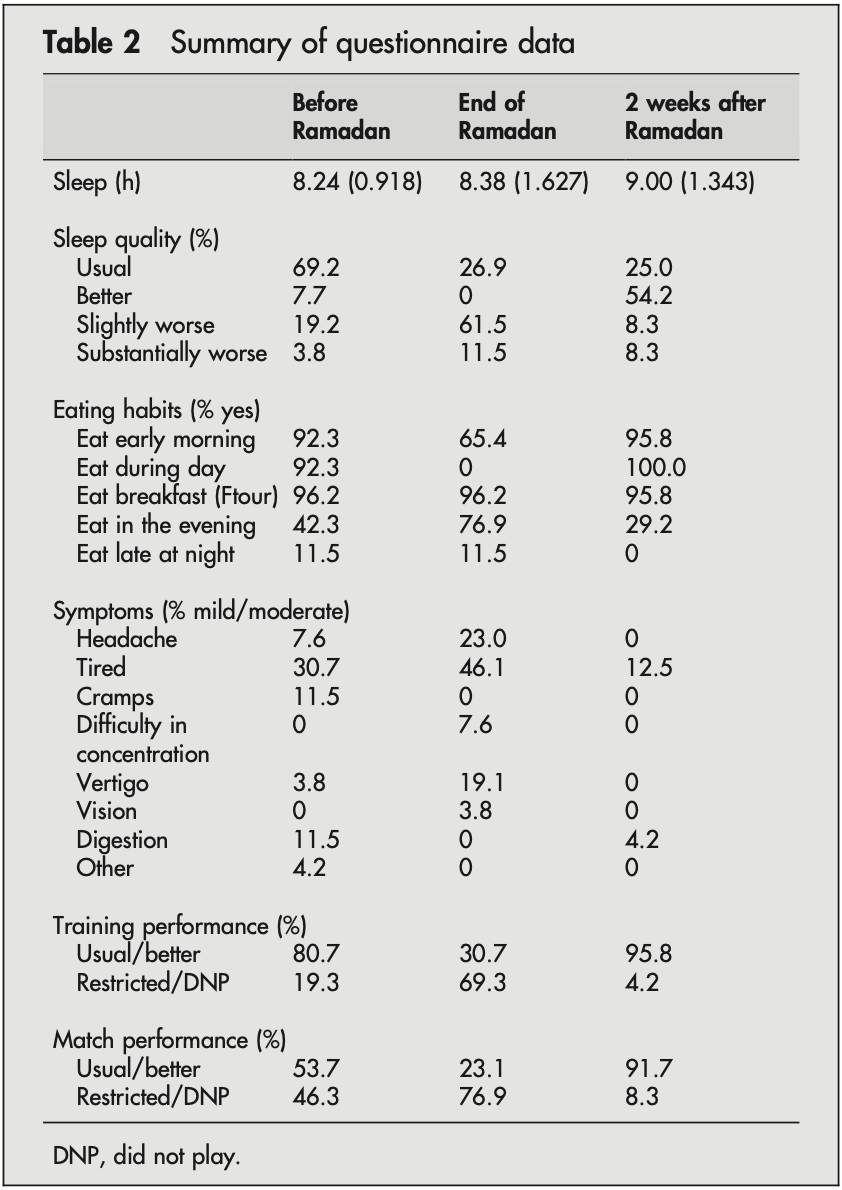Intermittent Fasting and Athletic Performance
- schmidttm6
- Dec 15, 2020
- 2 min read

The intermittent fasting diet revolves around the idea of fasting for an extended period of time with either a timeframe of eating or a restricted calorie intake. There are other forms of intermittent fasting, but a 16-hour fast with an 8-hour non-fasting period is most popular. The concept of intermittent fasting is to use stored fat as energy, rather than the carbohydrates we eat. As athletes, carbohydrates are important for fueling our bodies for training and competition. How would intermittent fasting affect an athlete's performance? Let's take a look at what the research says.

A study was conducted on 48 professional male soccer players. Each participant was put on the Ramadan fasting diet for approximately one month. Seventy-five percent of these individuals reported that they felt their performance got worse while on the diet. Their sleep was also reduced by 30 minutes and their sleep quality was poorer than before the fasting. They even experienced some symptoms, such as headaches and vertigo. The average was taken of each individual's test results. Tests performed included: sprint tests (5m, 10 m, 20m), vertical jump, dribbling, 4-line and 12 minute run. They found that time decreased for the 10m, 20m, dribbling and 4-line tests. They also found that less distance was ran during the 12 minute run and their heart rates increased from ~135 (before Ramadan fasting) to ~165 bpm (end of Ramadan fasting). Table 2 shows the results of a questionnaire that the individuals answered. The data gathered showed that these individuals were affected negatively in sleep quality, eating habits, training/match performance and also showed more symptoms (1).
Moro et al. observed thirty-four resistance-training males. These men were divided into an intermittent fasting (IF) group and a non-fasting (NF) group. All individuals went through a the same exercise program, specific to their maxes. Fat-free mass (FFM), fat mass (FM), arm muscle cross-sectional area (CSA), leg muscle CSA, 1-RM bench press and 1-RM leg press were all recorded before and after the 8-week program. Both the IF group and the NF group saw an increase in FFM, arm and leg CSA, as well as an increase in bench press and leg press maxes; however, the NF showed slightly greater increases in these areas.Both groups showed a decrease in FM, but the IF group showed a greater decrease. These results suggests that intermittent fasting doesn't negatively impact resistance-training individuals, but the muscular gains aren't as significant (2).
The results from these studies are contradictory. It's likely that the results vary due to the different fasting methods used. However, Zerguini et al. mentioned that they found multiple studies that varied in their outcomes even when the same fasting method (Ramadan) were used (1).
Resources
Zerguini, Y., Kirkendall, D., Junge, A., & Dvorak, J. (2007). Impact of Ramadan on physical performance in professional soccer players. British Journal of Sports Medicine, 41(6), 398-400. doi:10.1136/bjsm.2006.032037
Moro, T., Tinsley, G., Bianco, A., Marcolin, G., Pacelli, Q. F., Battaglia, G., . . . Paoli, A. (2016). Effects of eight weeks of time-restricted feeding (16/8) on basal metabolism, maximal strength, body composition, inflammation, and cardiovascular risk factors in resistance-trained males. Journal of Translational Medicine, 14(1). doi:10.1186/s12967-016-1044-0
.png)



Comments